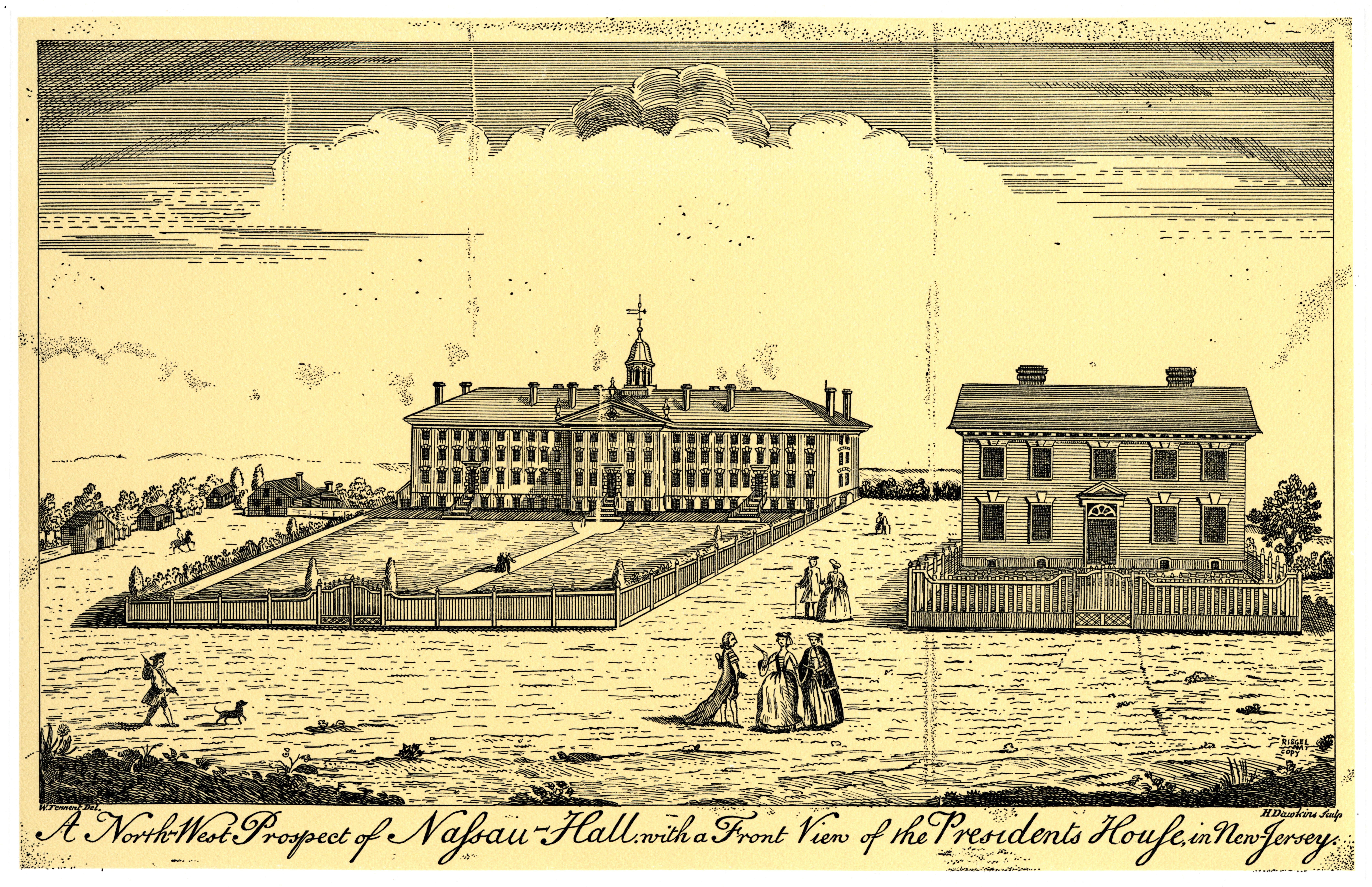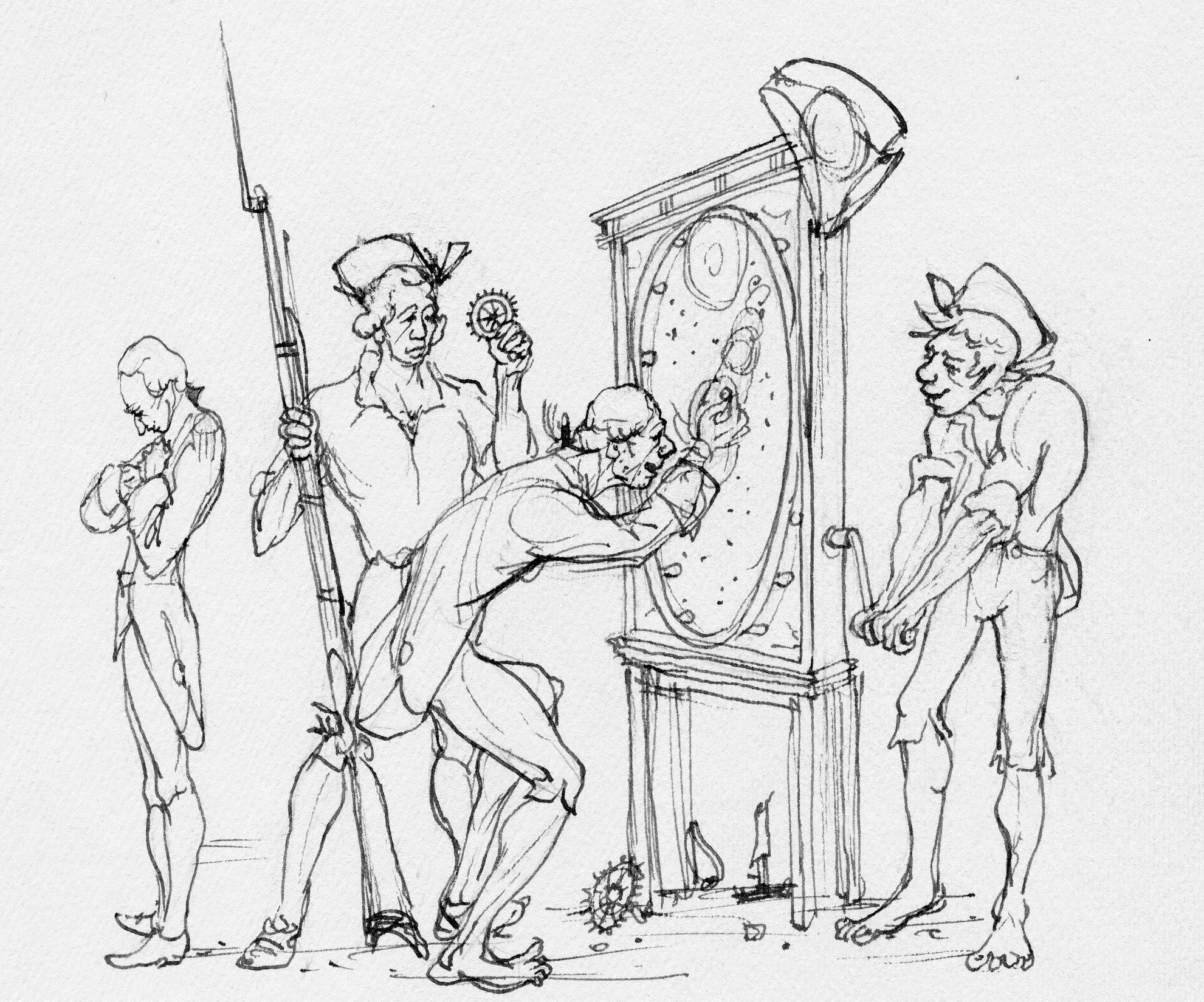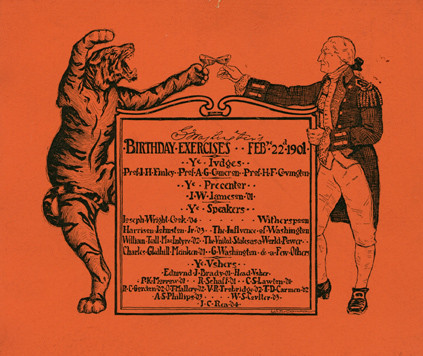Last July, I had the distinct pleasure of spending an insightful hour with Darley Newman, the charismatic host of the Emmy Award-winning PBS travel series, Travels with Darley. Darley, a renowned travel expert and documentarian, was in Princeton to film an episode titled “New Jersey: Revolutionary Road Trip,” a part of her captivating series that explores diverse destinations through unique cultural and historical lenses. Her team had contacted me, and I was thrilled to contribute to her exploration of Princeton’s rich past, specifically Nassau Hall’s pivotal role during the Battle of Princeton. After confirming the necessary filming permissions from Princeton University’s Communications Office, I eagerly anticipated sharing the historical significance of this iconic landmark.
 An 18th-century illustration depicting Nassau Hall at Princeton, showcasing its historical architecture and prominence as a landmark during the Revolutionary era. This image enhances the understanding of Nassau Hall’s appearance during the time period discussed in “Travels with Darley”.
An 18th-century illustration depicting Nassau Hall at Princeton, showcasing its historical architecture and prominence as a landmark during the Revolutionary era. This image enhances the understanding of Nassau Hall’s appearance during the time period discussed in “Travels with Darley”.
The day of filming dawned typically humid for a New Jersey July. We began our session outside Nassau Hall, capturing B-roll footage to set the scene before moving into the historic Faculty Room. Our focus: unraveling the intriguing tale of the purported decapitation of the portrait of King George II. To prepare, I delved into various historical accounts, finding David Hackett Fischer’s acclaimed book, Washington’s Crossing, particularly illuminating. Darley’s interviewing style was engaging and thorough. She posed thoughtful questions, sometimes revisiting the same query from different angles within the room, ensuring a comprehensive exploration of the subject. I navigated her questions, striving for clarity and accuracy in my responses, aiming to contribute meaningfully to her Travels with Darley episode.
One key historical detail I shared concerned the earliest documented mention of the King George II portrait’s destruction. Intriguingly, it appears not in immediate accounts after the Battle of Princeton, but rather six years later in the Board of Trustees minutes. This record details the commissioning of George Washington’s portrait, funded by Washington’s own generous donation of 50 guineas as “a testimony of his respect for the college.”
The Board, being desirous to give some testimony of their high respect for the character of his excellency general Washington, who has so auspiciously conducted the armies of America. Resolved, that the Rev’d Dr’s Witherspoon, Rodgers, and Jones, be a committee to wait upon his Excellency to request him to sit for his picture to be taken by Mr. Charles Wilson [sic] Peale of Philadelphia – And, ordered that his portrait, when finished be placed in the hall of the college in the room of the picture of the late king of Great Britain, which was torn away from the American artillery in the battle of Princeton.
This excerpt from page 236 of the minutes (emphasis added) highlights the deliberate replacement of the British monarch’s image with that of the American hero, a powerful symbolic gesture in post-revolutionary Princeton.
 Darley Newman and Dan Linke pictured in the Faculty Room at Princeton University, standing beneath Charles Willson Peale’s iconic painting “George Washington after the Battle of Princeton”. This photo captures a moment from the filming of “Travels with Darley” and showcases the historical artwork discussed in the episode.
Darley Newman and Dan Linke pictured in the Faculty Room at Princeton University, standing beneath Charles Willson Peale’s iconic painting “George Washington after the Battle of Princeton”. This photo captures a moment from the filming of “Travels with Darley” and showcases the historical artwork discussed in the episode.
The commissioned artwork, “George Washington at the Battle of Princeton,” became a centerpiece of Nassau Hall. In the Travels with Darley episode, James Steward, Director of the Princeton University Art Museum, expertly elaborates on the painting’s significance. Princeton University possesses two versions of this important portrait. The original, which graced Nassau Hall for two centuries, now resides in the Art Museum, while “George Washington after the Battle of Princeton” currently hangs in the Faculty Room, continuing to inspire reflection on American history. You can learn more about these portraits and their history through resources provided by the Princeton University Art Museum, enhancing your understanding of the context explored in Travels with Darley.
The popular narrative often attributes the destruction of King George II’s portrait to a cannonball strike during the Battle of Princeton. However, the first recorded mention of this “decapitation” appears nearly 125 years later. William S. Stryker, in his 1898 book The Battles of Trenton and Princeton, wrote: “Captain Hamilton’s light battery was then run up on the campus, and a warning six-pound shot was sent into the building. Tradition says the ball entered the front of the chapel, now the Geological Museum, and singular to relate passed through the head of the portrait of King George the Second.” David Hackett Fischer, in Washington’s Crossing, acknowledges this uncertainty and proposes an alternative theory: that American soldiers, in the fervor of victory, might have vandalized the portrait, an act consistent with historical patterns of soldiers defacing symbols of their defeated foes. Adding to this possibility, it’s documented that subsequent American soldiers caused damage to the Rittenhouse Orrery, a sophisticated scientific instrument housed at Princeton. One historian even described these Colonial soldiers as behaving “more like a swarm of vandals than the defenders of liberty.” This nuanced historical perspective, highlighted in Travels with Darley, encourages viewers to consider multiple interpretations of the past.
 A historical sketch depicting American soldiers allegedly looting the Rittenhouse Orrery, illustrating a perspective on the behavior of soldiers during the Revolutionary War era, which is relevant to discussions in the “Travels with Darley” episode about historical accuracy and interpretation.
A historical sketch depicting American soldiers allegedly looting the Rittenhouse Orrery, illustrating a perspective on the behavior of soldiers during the Revolutionary War era, which is relevant to discussions in the “Travels with Darley” episode about historical accuracy and interpretation.
Regardless of the precise cause of the portrait’s damage, the event carries a larger symbolic weight, perfectly captured by Travels with Darley. The Battle of Princeton forced the British to reassess their assumptions of military dominance. Initially confident in swiftly quashing the American Rebellion – remember, the Declaration of Independence was only signed months prior – the British had easily pushed the Continental Army across New Jersey. However, at Princeton, Washington’s strategic brilliance and the tenacity of American troops turned the tide. Instead of a quick victory, the British faced four more years of war, ultimately culminating in American independence thanks to crucial French support. Therefore, the destruction of George II’s portrait, whether by cannonball or soldier, symbolically foreshadowed the diminishing British power in the American colonies. As Darley aptly summarizes in Travels with Darley, Princeton witnessed a significant exchange: swapping a King George for a President George – a decidedly advantageous trade for the nascent United States.
 The Princeton Tiger toasts George Washington on the program for the Washington
The Princeton Tiger toasts George Washington on the program for the Washington
Following our indoor discussions, we moved to the southwestern wall of Nassau Hall to examine the purported cannonball dent. While an indentation is visible, concrete evidence linking it definitively to a cannonball is even less substantial than the portrait decapitation legend. University Facilities staff periodically clears ivy from this area, allowing visitors to seek out this historical curiosity on the second floor, near the Faculty Room wall. This on-location exploration brings a tangible element to the historical narrative presented in Travels with Darley.
Despite past experiences filming for various University projects, being on camera still evokes a touch of nervousness. However, Darley’s genuine and approachable demeanor quickly put me at ease. The Darley Newman you see on Travels with Darley is authentically who she is – engaging, curious, and down-to-earth. Ironically, I co-authored an article for archivists offering guidance on media interactions, drawing largely on the wisdom of my award-winning filmmaker friend Travis Williams. One key takeaway, which held true during my Travels with Darley experience, is that media professionals often aim to showcase your expertise positively. It’s a collaborative process, not an adversarial interrogation. Darley and her team masterfully selected the most compelling segments, and I’m genuinely delighted with my contribution and the overall episode. It features numerous other individuals and Princeton landmarks that local viewers will readily recognize and appreciate.
The “New Jersey: Revolutionary Road Trip” episode of Travels with Darley premiered on Wednesday, March 6th on PBS stations. To ensure you don’t miss future episodes exploring fascinating destinations, be sure to check your local PBS listings and embark on a journey of discovery with Travels with Darley.
For Further Reading:
Armstrong, April C. “A Brief History of the Architecture of Nassau Hall.”
Brennan, Daniel. “Alexander Hamilton Shooting the Cannonball that Destroys the Portrait of King George.”
